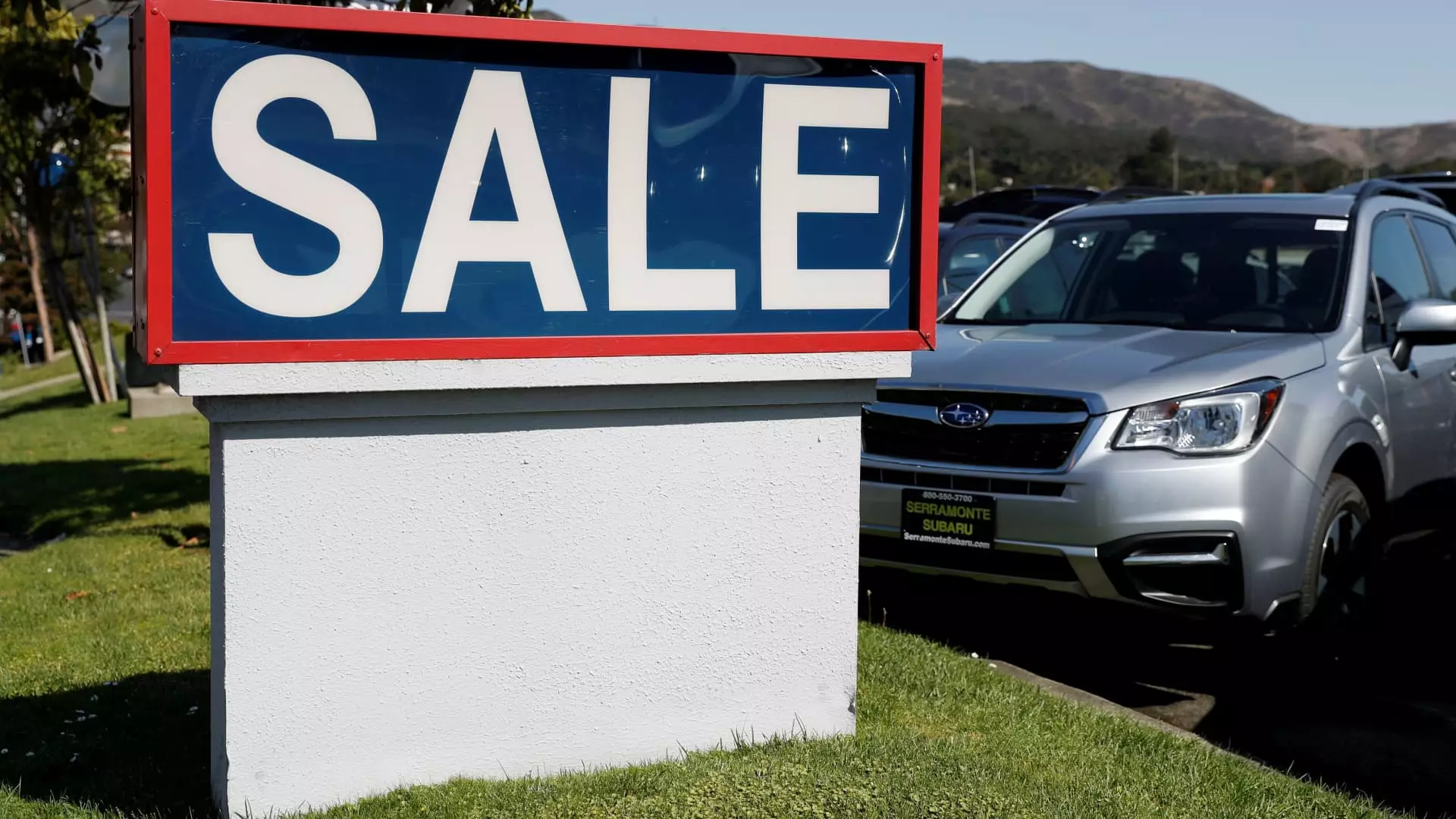The automotive industry in the United States is on the cusp of a noteworthy recovery, with analysts projecting an upsurge in new vehicle sales for 2025. This optimistic shift is primarily attributed to decreasing interest rates and a gradual improvement in vehicle affordability. While challenges remain, including high transaction prices and ongoing supply chain issues, the forecast indicates that sales could reach approximately 16.3 million units—marking an increase when compared to recent years. This article explores the driving factors behind this anticipated growth and the potential implications for consumers and automakers alike.
Cox Automotive leads the charge in optimistic projections, placing new light-duty vehicle sales at 16.3 million units. This figure slightly surpasses the estimates from other industry analysts, such as S&P Global Mobility and Edmunds, who have settled on about 16.2 million. Notably, this potential rebound is a response to a cornerstone of market normalization following the considerable disruptions triggered by the coronavirus pandemic. The anticipated sales for 2025 would reflect a modest gain of around 2.5% over the current year’s estimates, which range between 15.9 million and 16 million.
This anticipated growth indicates a shift toward more favorable conditions for prospective car buyers. Jessica Caldwell, the head of insights at Edmunds, highlighted a marginally improved market for consumers, despite lingering financial pressures. The landscape is gradually shifting through reductions in vehicle inventories coupled with strategic incentives and discounts offered by automakers that soften the financial burden on consumers.
In contrast to prior years, one of the most promising sectors projected for growth in 2025 is the entry-level vehicle category. As economic constraints persist and consumers gravitate toward budget-friendly options, the focus on affordability has become critical. Edmunds reported a decrease in the average transaction price of new vehicles, recording $47,465 in 2024—down from $47,851 in 2023. While this reflects a minor drop, it’s essential to note that the average price is still significantly inflated compared to pre-pandemic levels.
The proliferation of entry-level options aligns with consumer preferences for more economical vehicles amidst ongoing inflationary pressures. Many consumers are adjusting their expectations and seeking lower-cost alternatives, creating a compelling opportunity for manufacturers to capture market share in this essential segment.
The electric vehicle (EV) market is another dynamic area highlighted in projections. Analysts predict that sales of electrified vehicles, which encompass hybrids, plug-in hybrids, and fully electric models, will continue on an upward trajectory. Cox Automotive anticipates record sales of all-electric vehicles in 2024, approaching 1.3 million, thus capturing an 8% market share—up from 7.6% the previous year. However, this growth may be tempered by a slowdown in sales for EV leader Tesla, setting the stage for increased competition from other manufacturers such as Hyundai and General Motors.
Cox underscores that future considerations regarding federal consumer credits for EV purchases, which could be eliminated under specific political pressures, pose a potential risk for sustained growth. The loss of incentives could affect consumer purchasing decisions and hinder the expansion of the EV segment.
With the changing political landscape, upcoming policy shifts, including potential tariffs proposed by President-elect Donald Trump, could disrupt the automotive market, especially related to vehicle production in neighboring countries like Canada and Mexico. Such tariffs could escalate vehicle production costs and subsequently consumer prices, complicating the recovery forecast. Yet, Jonathan Smoke from Cox Automotive expresses cautious optimism; he suggests that any substantial changes in tariffs may take time to implement, and a preemptive shift in consumer demand may occur as buyers aim to secure vehicles before potential price hikes.
This interplay between political uncertainty and market behavior could lend itself to both challenges and opportunities for manufacturers and buyers as the automotive landscape continues to evolve.
While the trajectory for U.S. vehicle sales appears to be heading upward towards 2025, both consumers and manufacturers must stay vigilant. Factors such as inventory levels, financing conditions, and government policies will significantly influence the marketplace. Price reductions and greater accessibility to affordable vehicles may create an environment conducive to car buying, yet the shadow of potential market disruptions looms large. As the industry navigates these tumultuous waters, adaptability and responsiveness will be essential for all stakeholders involved. The coming years could indeed redefine the American automotive landscape, blending innovations in vehicle types with evolving consumer experiences.

Leave a Reply